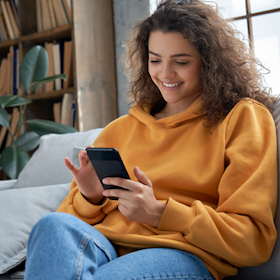
Editor's note: The Charge 2 is no longer Fitbit's newest fitness tracker. The information below has been checked for accuracy, but pricing and availability may vary. All comparisons to other smartwatches are compared to 2016 models.
Verdict:
Fitbit's Charge 2 is an easy to recommend fitness tracker for those after a bit more than the "basics" and a healthy dose of motivation. Continuous heartrate monitoring, an amazing companion app, and a five to six day battery life are all standout features. On the other hand, the lack of water resistance and a somewhat bulky design may put some off.
|
Like:
|
Dislike:
|
|
Score: 80/100 |
Original cost: $199.95 |
What Is It?
The Fitbit Charge 2 is the successor to Fitbit's best-selling tracker to date, the Charge HR. Much like the Charge HR, the Charge 2 is a tracker built for fitness enthusiasts looking to monitor and improve their performance, rather than just count their steps. The Charge 2 tracks the following metrics: continuous heartrate, steps, calories, distance travelled, sleep, stairs climbed, and active minutes.
While the big new feature is a redesign, the Charge 2 also benefits from a couple of additions on the software side. The Charge 2 is able to monitor your overall cardio fitness level, and walk you through guided breathing exercises to help manage stress.

Notable Features
From a hardware perspective, the Charge 2's most notable new feature is a major redesign. The tracker itself is a small metal and glass "brain" that then connects to a decent range of interchangeable straps. In the box, you'll get an elastomer band that's designed for working out, but if you're after something a little more svelte, leather bands are available as an optional (although pricey) accessory.
Fitbit's leather bands provide an easy way to make the Charge 2 look a bit dressier, but can be a bit stiff out of the box, and can grunge up pretty quickly too. That being said, you really shouldn't be wearing the leather option when you're working out, at least if you want to keep it looking pristine.
Even without a leather band, the Charge 2 looks more premium thanks to the use of glass and metal. It still looks like a fitness tracker, but it's comparatively subtle. The larger screen is nice and easy to view outdoors, but it isn't seamlessly integrated into the Charge 2's body. Depending on what angle you're looking at it from, it's very easy to see the screen and the surrounding bezel as two distinct elements.
Core tracking functionality is complemented by the ability to measure your cardio fitness level. When used with a Charge 2, the Fitbit companion app will use your exercise data, height, weight and age to calculate your VO2 Max score (the maximum amount of oxygen your body can use when working out at your hardest). This is used as an overall fitness metrics. The Fitbit companion app will also show you how you compare to others your age and gender.
However, it's a little hard to tell just how well the Charge 2's cardio fitness level tracking works; mine has stayed exactly the same throughout the entire three week duration I've spent with the tracker. I doubt I've been working out enough to actually see a shift in cardio fitness, but it makes it tricky to say how reliable the functionality is.
This is Fitbit's first tracker that attempts to tackle the rapidly expanding world of wellness technology, but does so in a relatively basic manner. Toggling through options on the tracker itself will give you the option of starting either a two minute or five minute "relaxation" session said to be personalized based on your current heartrate. After a brief calibration, on screen prompts will direct you when to inhale and exhale. Oddly, these sessions aren't logged anywhere, and you aren't provided with any quantifiable metrics when you finish your session (such as what your heartrate was before, and what it is after you're all relaxed out).
Another neat feature is the Charge 2's ability to automatically detect a workout. Earlier Fitbit trackers would require you to manually start a workout, but the Charge 2 will automatically log certain activities, provided you spend enough time exercising (at least 15 minutes by default). The Charge 2 will automatically recognise walks, runs, outdoor bike rides, elliptical sessions, sports with continuous movement, and aerobic workouts with continuous movement.

What's Good
First and foremost, the Charge 2 is comfortable to wear for extended periods of time. It's a tad bulky, but not to the point where it gets in the way. In fact, most of the time I forgot I was wearing it. Needless to say, this is great considering Fitbit really wants you wearing it all of the time, even when you're sleeping.
When wearing older Fitbit trackers, I often found they could irritate my (admittedly sensitive) skin after a couple of days of constant wear, or after a workout. Fortunately, I haven't encountered any discomfort, rashes, or irritation with the Charge 2's elastomer band, even after almost three weeks of non-stop wear (I've only taken it off to recharge its battery and to shower). Fitbit does however recommend that you regularly give the band a quick clean with water or rubbing alcohol.
The Charge 2 hardware is important, but software is an equally crucial part of the fitness equation. Fitbit's companion app is an incredibly polished offering that makes it easy to set goals and check your progress. Historical data is simple to peruse, which in turn helps you work out (pardon the pun) if you're actually becoming more active. Achievements for reaching certain milestones and social aspects that let you compete with other Fitbit touting friends are also nice touches.
While the Charge 2 isn't Fitbit's longest lasting tracker, the battery life is still respectable. I found myself recharging every five to six days.

What's Not So Good
Fitbit announced its first waterproof tracker - the Flex 2 - alongside the Charge 2, but sadly, the Charge 2 doesn't offer any water resistance. While a splash or two won't hurt it, you can't take it in the shower, and you certainly can’t take it swimming. As more and more fitness trackers start to offer waterproofing as a key feature, it would be great to see Fitbit include even basic water resistance as a standard across its entire family.
While the Charge 2 can make use of your phone's GPS when paired over Bluetooth, it doesn't have GPS built into the device (the much bulkier Surge is Fitbit's only device with GPS on board). If you're after more accurate data for runs, walks, or bike rides, you'll need to keep your phone with you for the duration of the workout.
GPS would have made the already chunky Charge 2 an even larger tracker. While the Charge 2 is comfortable to wear, it's not quite as elegant as the slimmer Alta. The inclusion of a heart-rate monitor is the likely culprit, and raises the Charge 2 further up on your wrist. It's not unwieldy and I haven't found it getting in the way, but some may prefer a smaller form factor.
The Charge 2 retailed for $199.95 with an elastomer band, but classier leather options are a bit of expensive add-on, priced at an extra $89.95. I get that the Charge 2 is predominantly a fitness tracker, but it would be great to have the option to get the Charge 2 with a leather band in the box, and avoid elastomer entirely.
The Charge 2 has limited notification support, and can alert you to calls, text messages, and calendar events. Unfortunately, support for emails and social media is non-existent, so the Charge 2 can't really double as a smartwatch.

Who's It For?
The Charge 2 is an ideal wearable for those looking for a fitness tracker that does a little bit more than the basics. Continuous heartrate will provide more accurate information about just how many calories you're burning when you're out for a jog, walking to work, or pumping iron at the gym. The Charge 2 is a more holistic tracking option.
While the Charge 2 is able to log more data than Fitbit's simpler options, it's worth noting that fitness trackers should be treated as motivational tools; you won't necessarily get pinpoint accuracy, but you'll get a more than reasonable indication of how you're performing.
In terms of design, the Charge 2 is a far more elegant device than Fitbit's past trackers, as well as many competing alternatives. It doesn't scream "fitness", and you can dress it a bit thanks to the optional leather straps. If you genuinely want to wear a fitness tracker 24/7 and care about how it looks, the Charge 2 is a good option.

What Else Can I Buy?
Apple Watch
If you're looking for a wearable that works as a fitness tracker and a smartwatch, the Apple Watch is a great choice for iPhone owners. The Apple Watch offers seamless integration with iOS for notifications and more, and the newly released Watch Series 2 doubles down on fitness functionality. It's swim-proof (water resistant as deep as 50 metres) and has integrated GPS for working out when you're without your iPhone. On the other hand, the Apple Watch doesn't offer sleep tracking, has to be charged once a day, and starts at a much higher price point.
The Apple Watch is only compatible with iPhones.
Samsung Gear Fit 2
If you're looking for a richer notification experience, Samsung's Gear Fit 2 is a happy compromise between a fitness tracker and a smartwatch. In addition to a full suite of fitness features (including heartrate monitoring and sleep tracking), the Gear Fit 2 can display notifications from any app on your phone. It is also rated IP68 for water resistance, which means it can safely be submerged as deep as 1.5 metres for as long as half an hour.
The Gear Fit 2 is only compatible with Android smartphones.
Fitbit Alta
If you're after a cheaper option, the Fitbit Alta is worth a look. Not only does the Alta retail for $169.95, it also offers a slimmer, thinner design and a longer battery life. You miss out on the Charge 2's heartrate monitoring, cardio fitness level, and wellness features, but otherwise, the Alta covers the essentials.
Find Better Phones and Plans
Hundreds of cell phone plans unpacked. All the facts. No surprises.



































